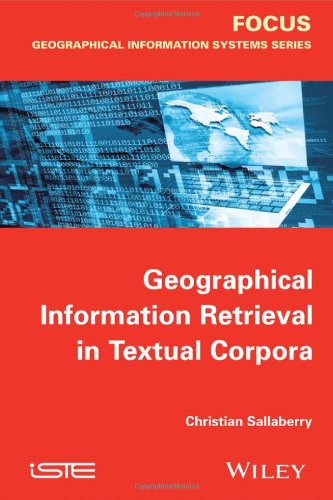

Most ebook files are in PDF format, so you can easily read them using various software such as Foxit Reader or directly on the Google Chrome browser.
Some ebook files are released by publishers in other formats such as .awz, .mobi, .epub, .fb2, etc. You may need to install specific software to read these formats on mobile/PC, such as Calibre.
Please read the tutorial at this link. https://ebooknice.com/page/post?id=faq
We offer FREE conversion to the popular formats you request; however, this may take some time. Therefore, right after payment, please email us, and we will try to provide the service as quickly as possible.
For some exceptional file formats or broken links (if any), please refrain from opening any disputes. Instead, email us first, and we will try to assist within a maximum of 6 hours.
EbookNice Team

Status:
Available4.7
39 reviewsThis book addresses the field of geographic information extraction and retrieval from textual documents. Geographic information retrieval is a rapidly emerging subject, a trend fostered by the growing power of the Internet and the emerging possibilities of data dissemination.
After positioning his work in this field in Chapter 1, the author makes proposals in the following two chapters. Chapter 2 focuses on spatial and temporal information indexing and retrieval in corpora of textual documents. Propositions for both spatial and temporal information retrieval (IR) are made. Chapter 3 tackles the use of generalized spatial and temporal indexes, which are produced from there in the framework of multi-criteria IR. Geographic IR (GIR) is discussed at length, since this IR combines the criteria of spatial, temporal and thematic research.
The author provides a rich bibliographical study of the current approaches focused on the modeling and retrieval of spatial and temporal information in textual documents, and similarity measures developed thus far in the literature.
The book concludes with a broad perspective of the remaining scientific challenges. Several areas of research are discussed, such as integration of a domain-based ontology, modeling of spatial footprints from the interpretation of spatial relation, and parsing of relations between features deemed relevant within a document resulting from a GIR process.
Contents
Foreword, Christophe Claramunt.
1. Access by Geographic Content to Textual Corpora: What Orientations ?
2. Spatial and Temporal Information Retrieval in Textual Corpora.
3. Multicriteria Information Retrieval in Textual Corpora.
4. General Conclusion.
About the Authors
Christian Sallaberry is currently Assistant Professor at the Law, Economics and Management Faculty in Pau, France. His current research interests are in the fields of geographical information retrieval (GIR) in textual corpora: spatial, temporal and thematic information recognition, analyzing, indexing and retrieval. He is interested in spatial, temporal and thematic criteria combinations within a GIR process.